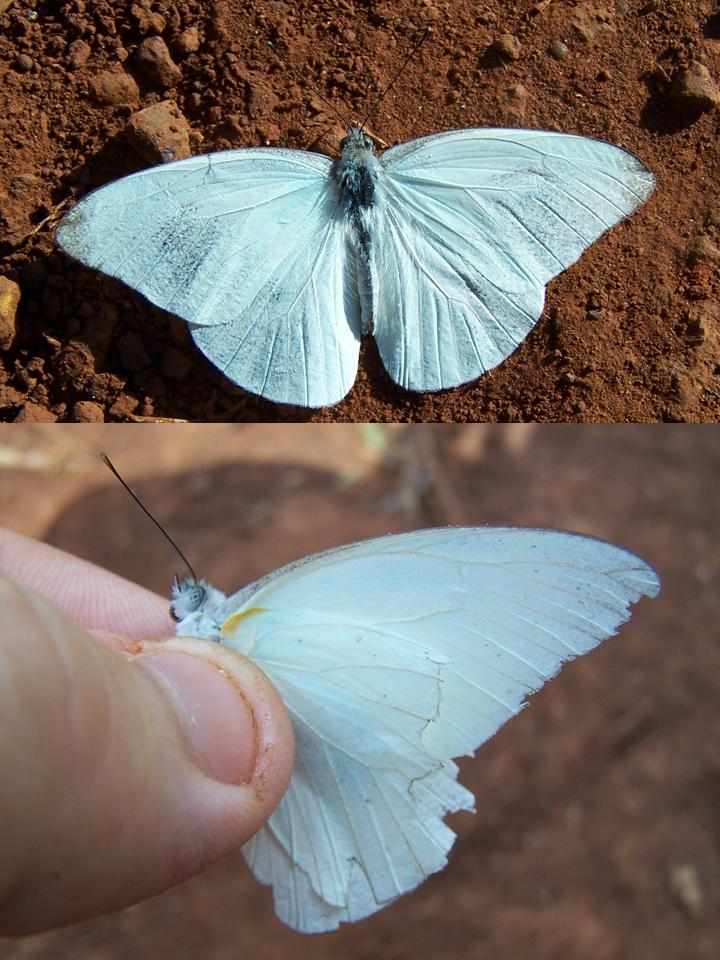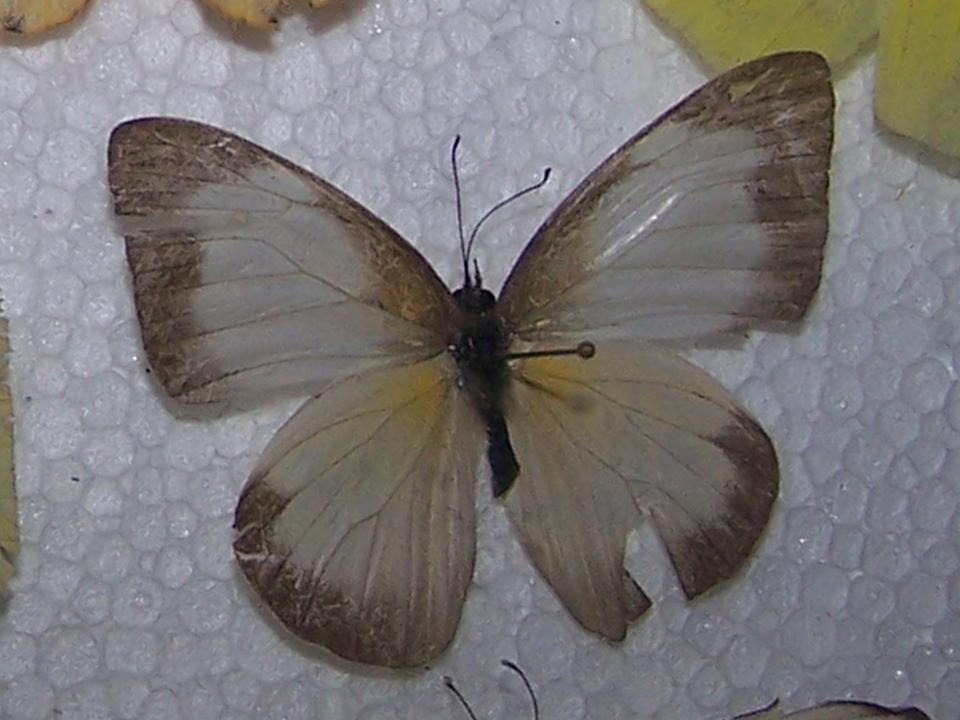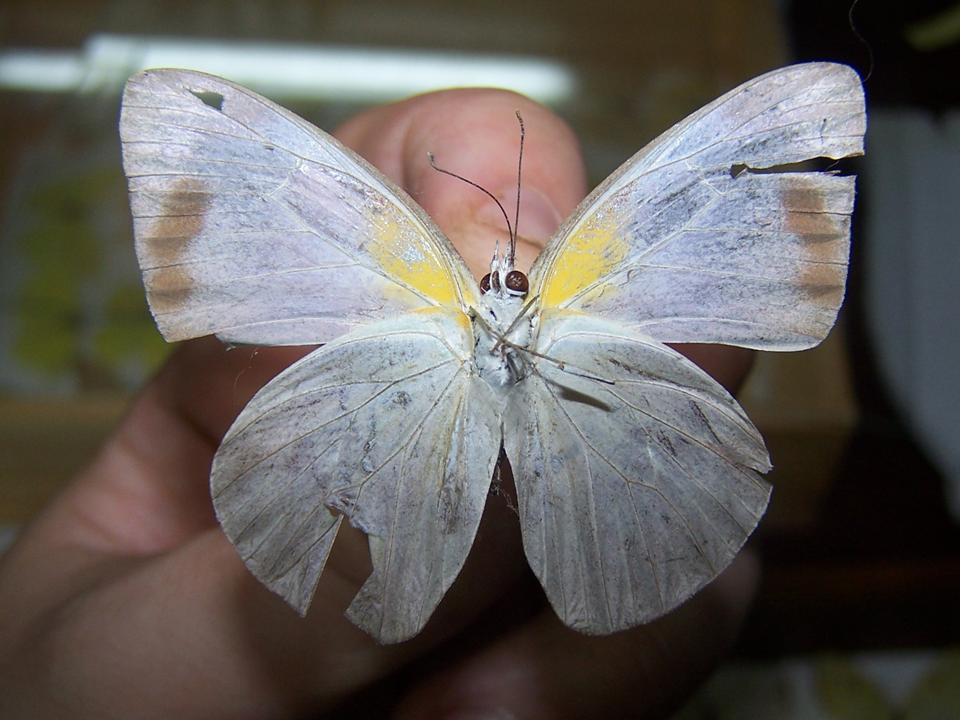

Designed by Paul Smith 2006. This website is copyrighted by law. Material contained herewith may not be used without the prior written permission of FAUNA Paraguay. Photographs on this web-site were taken by Paul Smith, Hemme Batjes, Regis Nossent,
Alberto Esquivel, Arne Lesterhuis, José Luis Cartes, Rebecca Zarza and Hugo del Castillo and are used with their permission.
Glutophrissa drusilla drusilla (Cramer 1777)
ENG: Tropical White, Big Milky
ESP: Lechera grande
JIZ: Forewing triangular with curved costa and pointed apices, hindwing rounded extending beyond outer margin of forewing on folded wing. Strong sexual dimorphism. Poses with wings folded. FLI: Flight strong and straight.
UPP: M (Fig 1) Uniformly white with slight black edging to apex of forewing. F (Fig 2) Pale yellowish-white, slightly yellower basally on hindwing especially. Outer margins and costa of forewing broadly bordered dark brown with slightly uneven, but not toothed, inner edge. Costal border squares off suddenly about halfway along its length and then broadens again closer to the apex, where the border is thickest. Costal and anal margins of hindwing lack dark border.
UND: M (Fig 1) Uniformly white with yellow comma at base of forewing. Veins prominent and with slight creamy tinge. F (Fig 3) Forewing whitish with pale brownish ghost image of apical border and yellowish patch basally. Broad blackish-brown smudge runs vertically on the outer forewing parallel to the outer margin. Hindwing whitish, with pale brownish ghost image of border and slightly darkened veins.
BOD: No information.
MMT: A medium-sized white Pierid. No measurements of Paraguayan specimens available. Canals (2003) gives a CL of 25mm.
SSP: Male is most likely confused with Ascia monuste automate, but note that that species has a creamy underside of the hindwing and more notable black apices. The Dismorphiid Pseudopieris nehemia is similar in colouration but quite different in shape with long, rounded wings, long, downcurved antennae, elongated abdomen and long legs - Glutophrissa is much more "typically-shaped". Furthermore the underwing of Pseudopieris nehemia has a distinctly greenish tone and lacks the yellow basal spot of Glutophrissa. Female is easily confused with female Ascia monuste on upperwing pattern. Note that this species lacks the pale spots in the dark apical border and that the costal border lacks the "spur" of A.monuste. Furthermore the dark border of this species is broader and with a smoother inner edge, not "toothed" like that of A.monuste. The underwing pattern is quite distinct, appearing much more uniform in this species, lacking the extensive dark markings on the hindwing and with a diagnostic broad dark vertical patch running parallel to the outer margin.
ABU: Uncommon.
HAB: Open areas, grasslands, edge of humid forest.
HOS: Plants in the families Capparaceae including Capparis and Cleome, Fabaceae including Senna and Euphorbiaceae including Drypetes. (Canals 2003).
Citable Reference: Smith P (2007) FAUNA Paraguay Online Handbook of Paraguayan Fauna Butterfly Species Account 13 Glutophrissa drusilla.
Last Updated: 16 September 2007.
References:
Canals G 2003 Mariposas de Misiones - LOLA, Buenos Aires.
 | FIGURE 1 |
|
 | FIGURE 2 |
|
 | FIGURE 3 |
|
FIGURES 1 - PROCOSARA, PN San Rafael (Paul Smith 5 March 07); 2-3 - IBIS collection, Pilar, Departamento Ñeembucú (Paul Smith 12 September 2007).

